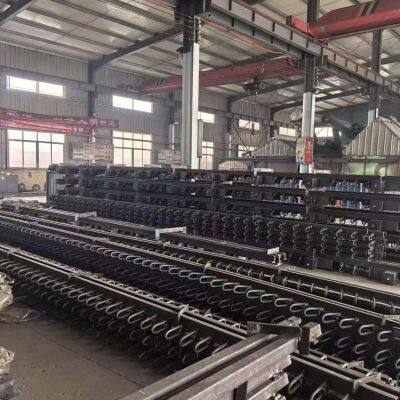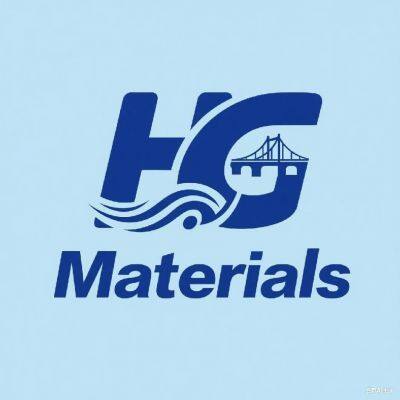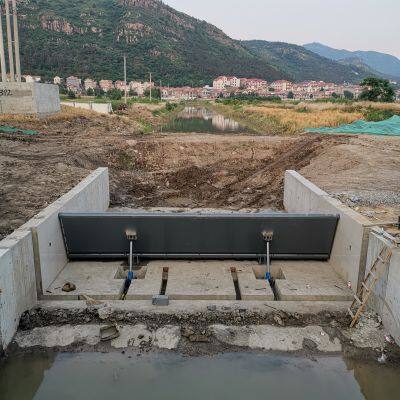Home > Products > River channel water retaining products > Wall Mounted Penstock Weir Gate Channel Penstock Gate for Water Flow Direction and Water Distribution Control
Wall Mounted Penstock Weir Gate Channel Penstock Gate for Water Flow Direction and Water Distribution Control
10 - 19 Square Meters
20 - 29 Square Meters
≥30 Square Meters
- Tianjin/Qingdao
- T/T L/C PayPal D/P Western Union Other
- 25 days
You May Like
-
Low-Cost and High-Efficiency Hydraulic Elevator Dam Designed for Urban Landscape Creation Drought Resistance and Peak-Valley Power Regulation
-
Eco-Friendly Hydraulic Elevator Dam Contributing to Biodiversity Protection Sediment Balance Maintenance and Water Self-Purification
-
China Hydraulic Elevator Sluice Dam for Hydroelectric Power Plants Hydraulic Elevator Dam
-
Large Size Electric Sluice Gate Valve for Drainage, Flood Control & Irrigation Water Conservancy Dam, Channel Flow Regulation
-
China OEM/ODM Hydraulic Elevator Sluice Dam for Bulk Orders Elevator Sluice Dam
-
Hydraulic Elevator Sluice Dam for Industrial Use Intelligent Gate Bic Hydraulic Lifting Dam Steel Sluice Energy-Efficient
Product Details
| Material | Carbon Steel/multi-grade hydraulic syst | Product Grade | AAA | |
| size | 2-10m | Type | Movable, up and down | |
| Dynamic system | multi-grade hydraulic system | Surface finish | marine grade 4th paint | |
| Transport Package | Wooden packaging | Specification | Manufacture according to the blueprints | |
| Trademark | HaoGu | Origin | Hengshui, Hebei, China |
Product Description
Hydraulic Elevator Dams: Application Insights Driven by Flexible Adjustment
Unlike traditional fixed dams with rigid structures, hydraulic elevator dams stand out for their on-demand height adjustment via hydraulic systems. This core feature enables them to address diverse water-related challenges across urban, rural, and ecological contexts—adapting to changing needs rather than imposing fixed constraints. Below is a reorganized exploration of their applications, centered on three key demand-driven dimensions:
Dimension 1: Dynamic Regulation for Hydrological Fluctuations
Hydrological uncertainty (e.g., sudden floods, seasonal droughts) is a major pain point for water management. Hydraulic elevator dams resolve this by acting as a "flexible buffer," adjusting their height in real time to balance water storage and discharge.
1.1 Flood Control & Waterlogging Mitigation: Responding to Extreme Rainfall
· Pain Point: Traditional fixed dams can’t quickly increase flood-carrying capacity, leading to river overflow and urban waterlogging during heavy rains.
· Application Logic:
· Pre-flood: When flood warnings are issued, the dam is proactively lowered (partially or fully) to expand the river’s cross-sectional area, creating more space for incoming floodwater.
· Mid-flood: If upstream water levels surge beyond warning lines, the dam’s hydraulic system allows it to drop to minimum height within minutes—ensuring unobstructed flood discharge and reducing pressure on urban dikes.
· Post-flood: Once waters recede, gradual raising of the dam restores normal river levels, securing water for urban landscape and daily non-potable use.
· Real-World Case: In China’s Wuxi and Changzhou, urban river sections equipped with hydraulic elevator dams have cut rainy-season waterlogging incidents by over 60%, protecting residential areas and subway entrances from inundation.
1.2 Drought Resistance & Irrigation: Stabilizing Water Supply
· Pain Point: Arid/semi-arid regions or areas with uneven rainfall often face crop water shortages during dry seasons, as traditional storage facilities lack adjustability.
· Application Logic:
· Dry-season storage: The dam is raised to capture water from upstream rivers, reservoirs, or occasional rains, forming a temporary "adjustable reservoir" connected to irrigation canals.
· Precision water release: By (fine-tuning) the dam’s height, farmers can control water flow to match crop needs—e.g., more water for rice at tillering stage, less for wheat at maturity—avoiding waste or under-irrigation.
· Emergency backup: During severe droughts, maximum-height raising of the dam stores every available drop, supporting cash crop irrigation and livestock drinking water supply.
· Comparative Advantage: Compared to earthen dams (which take 6–12 months to build and can’t be adjusted), hydraulic elevator dams are installed in 1–3 months and adapt to crop growth cycles, boosting irrigation efficiency by 30–40%.
Dimension 2: Composite Utilization for Urban-Rural Integration
Modern water projects demand more than single-functionality—they need to serve landscape, recreation, shipping, and energy needs simultaneously. Hydraulic elevator dams’ adjustability makes them ideal for "one structure, multiple uses."
2.1 Urban Landscape & Recreation: Shaping Livable Water Spaces
· Demand Background: Cities increasingly seek to enhance river ecosystems and public leisure areas, but fixed dams often limit water level control for landscape design.
· Application Value:
· Customized water surfaces: Raising the dam to a preset height creates a continuous, wide water body that reflects buildings and greenbelts—improving aesthetics and reducing urban heat islands by increasing humidity.
· Recreational zoning: By maintaining a safe water depth (0.5–1.2m) via height adjustment, the downstream area can be transformed into waterfront walkways, artificial beaches, or kayaking zones.
· Seasonal adaptation: Lowering the dam in winter prevents freezing-related damage; raising it in spring/summer maximizes landscape appeal for outdoor activities.
2.2 Inland Navigation: Ensuring Year-Round Shipping
· Pain Point: Fluctuating river levels (e.g., shallow shoals in dry seasons) limit ship draft, reducing navigable time and increasing transportation costs.
· Application Logic:
· Depth stabilization: Raising the dam in shallow sections boosts channel depth to meet ship draft requirements (e.g., 2.5m for 500-ton cargo ships in China’s Huaihe River), extending navigable time from 3–4 months to year-round.
· Lock coordination: Paired with ship locks, the dam forms a "stepwise water level system"—ships pass through locks to navigate between upstream (dam-raised) and downstream (dam-lowered) areas, ensuring continuous travel.
· Emergency safety: Remote monitoring allows rapid height adjustment if a ship malfunctions (e.g., grounding), stabilizing water flow to prevent vessel drift.
2.3 Small-Scale Power Generation: Supporting Clean Energy
· Demand Context: Rural and remote areas need low-cost, stable clean energy, but low water head (3–10m) often makes traditional hydropower unfeasible.
· Application Solution:
· Head enhancement: Raising the dam increases upstream water level, creating a stable head suitable for small generators—enabling continuous power production even in low-flow seasons.
· Demand-driven output: During peak electricity use (e.g., industrial daytime, residential evening), maximum dam height boosts water flow and power output; lower heights reduce flow during off-peak hours to save water.
· Rural grid integration: These small hydropower systems supply villages, agricultural processing plants, and irrigation pumps, cutting reliance on coal and lowering carbon emissions.
Dimension 3: Ecological Synergy for Sustainable River Systems
A key shortcoming of traditional dams is their disruption to river ecosystems (e.g., blocked fish migration, sediment accumulation). Hydraulic elevator dams address this by aligning engineering functions with ecological needs.
3.1 Facilitating Aquatic Organism Migration
· Ecological Pain Point: Fixed dams block migratory fish (e.g., sturgeon, salmon) from reaching spawning grounds, leading to population decline.
· Adaptation Measure: During spawning seasons, the dam is lowered to minimum height or fully opened, restoring natural river flow. Some projects add "fish passages" (gentle-slope channels) that work with height adjustment to guide fish upstream—improving migration success rates by over 50%.
3.2 Balancing Sediment Transport
· Ecological Issue: Fixed dams trap sediment upstream, causing downstream riverbed erosion and reduced farmland fertility.
· Solution Logic: The dam is periodically lowered (once every 1–2 months) to release sediment-laden water, transporting nutrients to downstream riverbeds and farmland. This maintains the river’s sediment balance and supports aquatic plant/microorganism growth.
3.3 Improving Water Quality
· Common Problem: Stagnant water (caused by fixed dams) leads to algae blooms and odor, worsening water quality.
· Regulation Method: By adjusting dam height to maintain moderate flow rates, the river avoids stagnation—diluting pollutants (e.g., domestic sewage, agricultural runoff) and enhancing self-purification. In small-city black-odor water treatment, pairing hydraulic elevator dams with ecological floating beds has achieved 80%+ reduction in harmful substances.
Future-Oriented Extension: Smart Integration
As water management becomes more intelligent, hydraulic elevator dams are evolving with IoT and AI technologies:
· Real-time monitoring: Sensors track water level, flow, and dam structure status, sending data to a central system for automatic height adjustment.
· Predictive regulation: AI models analyze weather forecasts and hydrological data to pre-adjust dam height—e.g., lowering 24 hours before expected heavy rain, raising 3 days before a predicted drought.
· Remote control: Operators can adjust the dam via mobile devices, reducing on-site work and improving response speed during emergencies.
Company Profile

Hengshui Haogu Engineering Materials Co., Ltd. is located at No. 10 Longzhaiyang Road, Longxing West Street, Qinglan Township, Jing County, Hengshui City, Hebei Province. It is a company mainly engaged in the rubber and plastic products industry; the company primarily manufactures: bridge rubber bearings, rubber waterstops, rubber water stop strips, river water blocking rubber dams, hydraulic elevator dams, cast iron sluice gates, and other hydraulic and highway products.
Contact Us

- Hengshui Haogu Engineering Materials Co., Ltd.
- Contact nameWendy Chat Now
- AddressNo. 10 Longchaoyang Road, Longxing West Street, Qinglan Township, Jing County,, Hengshui, Hebei
Product Categories
New Products
-
Durable Inflatable Rubber Dam for Agricultural/Flood Control
-
Water Injection Boom Reusable Inflatable Rubber Flood Dam Inflatable Water Filled Tube Flood Barriers
-
Factory Directly Sale Inflatable Waterproof Dam Flood Dam Protection Water Stop Rubber Dam
-
High-Quality Finest Price Inflatable Air Filled Rubber Dam for Irrigation
-
HG001 High Quality Rubber Pvc Water-stop Construction Concrete Joints Waterstops Rubber Water Stop
-
HG002manufacturer specializes in producing custom-made copper-inlaid cast iron gates and cast iron round gates
-
HG003 Customized Municipal Sewer Pipe Repair Pipe Blockage Diameter 800 Rubber airbag Rubber Pipe Sealing airbag
-
HG004 Elastomeric Laminated Neoprene Rubber Bridge Bearing Pad Nature Rubber Elastomeric Bearing Pad
-
HG005 Water Filled Inflatable Seamless Rubber Dam for Hydropower Farmland irrigation, river landscape, interception of water flow
-
HG006 Hydraulic Elevator Dam Store Water Irrigate Landscape Flood Control Sluice Dam Gate
-
HG005 Integral Seamless EPDM Rubber Dam for Combined Water-Air Inflation | River Retention, Landscape, Irrigation & Hydropower
-
HG001 Factory direct supply of rubber products for construction factories and tunnels, with embedded multi-specification steel-edged waterstops
-
HG001 Factory direct sale of rubber waterstops for hydraulic construction projects 651 embedded rubber waterstops
-
HG001 Rubber waterstop with embedded steel edge for subway tunnel, water-expanding rubber waterstop manufacturer
-
HG001 Rubber waterstop strip manufacturer, waterproofing strip for tunnels and utility corridors, back-applied type 651, embedded type
-
HG002 Cast iron sluice gate, farmland irrigation and drainage gate, high-strength wear-resistant hydraulic gate, available in wholesale
-
HG002 Integrated cast iron gate, buttress-type gate water-stop gate for farmland irrigation,
-
HG002 Cast iron sluice for farmland irrigation channels, water-stopping cast iron square sluice gate, integrated hydraulic machinery equipment
-
HG005 Flood discharge and flood control gate rubber dam, spillway dam, water-filling and air-inflated rubber dam, river water-blocking dam replacement
-
HG004 Bridge rubber bearing factory wholesale bridge shock-absorbing rubber block GJZf4 PTFE plate sliding rubber bearing
-
HG004 Bridge circular PTFE plate rubber bearing, rectangular national standard grid bearing, shock-absorbing pad
-
Highway bridge rubber bearings, plate rubber bearings, GJZ rectangular bearings, expansion joint bearings available in stock
-
HG004 Bridge highway rubber bearings, circular and rectangular bridge construction PTFE rubber pad bearings, shock-absorbing pads
-
HG005 Rubber dam, rubber water dam bags for river blocking, large rubber dam, inflatable and water-filled rubber dam, rubber sluice gate
Popular Searches
Find Similar Products By Category
- Industrial Equipment & Components > Other Equipment & Components
Product Tags:
- Please Enter your Email Address
- Please enter the content for your inquiry.
We will find the most reliable suppliers for you according to your description.
Send Now-
 Wendy
Hi there! Welcome to my shop. Let me know if you have any questions.
Wendy
Hi there! Welcome to my shop. Let me know if you have any questions.
Your message has exceeded the limit.

- Contact supplier for lowest price
- Customized Request
- Request Sample
- Request Free Catalogs
Your message has exceeded the limit.
-
Purchase Quantity
-
*Sourcing Details
Your inquiry content must be between 10 to 5000 characters.
-
*Email
Please enter Your valid email address.
-
Mobile







